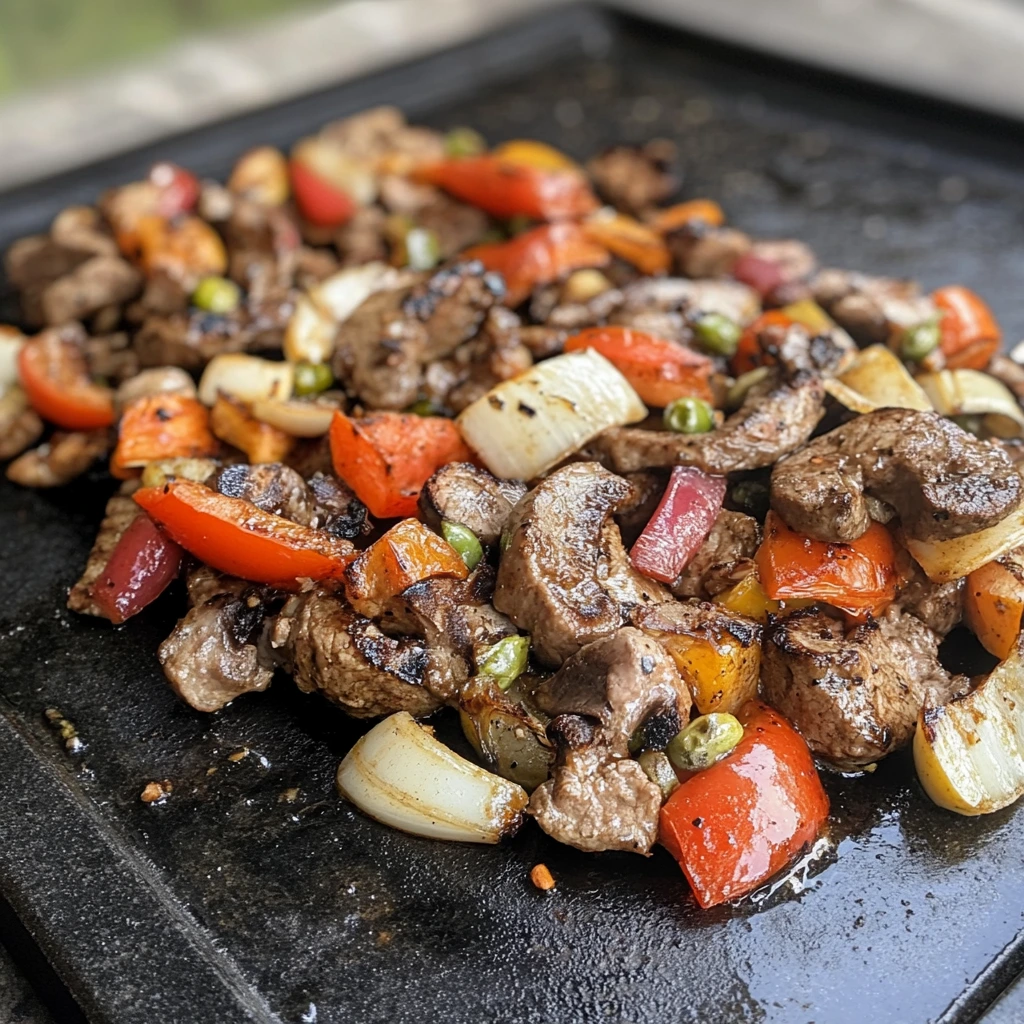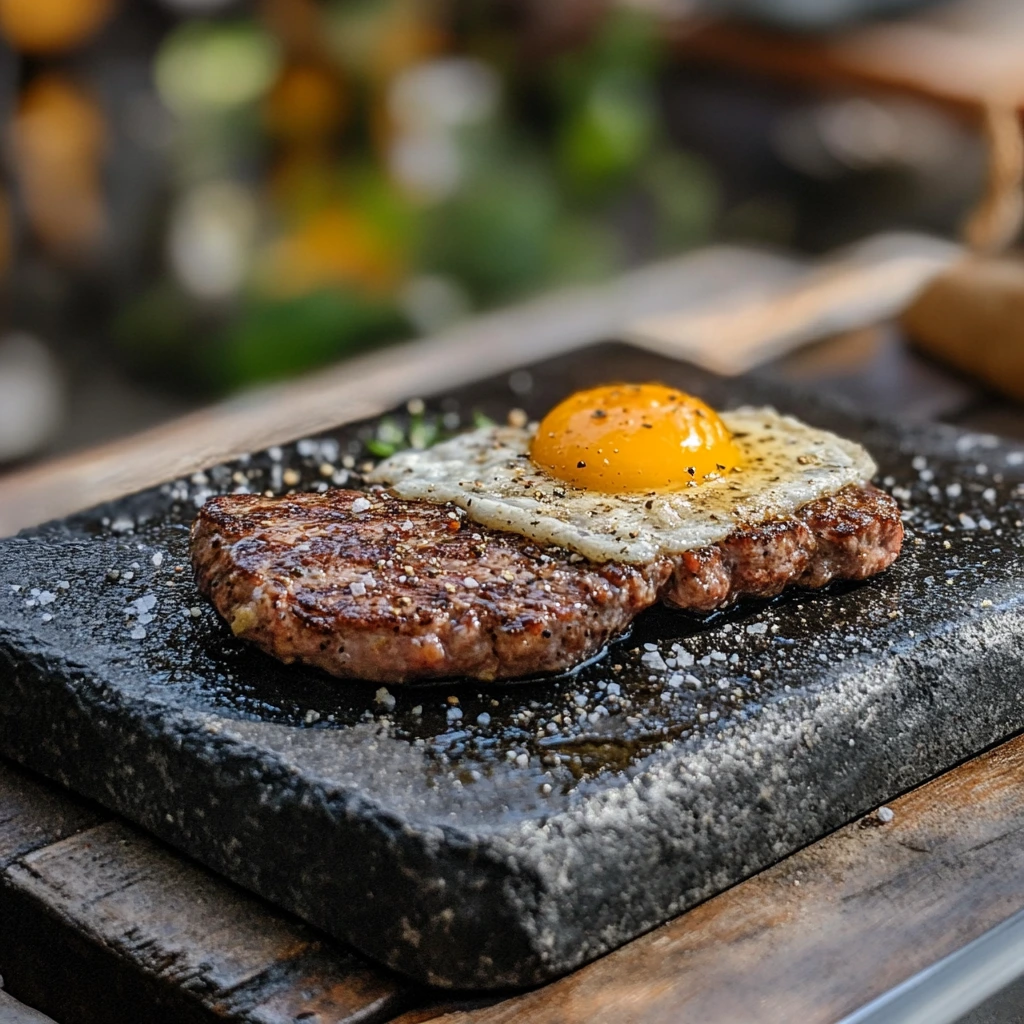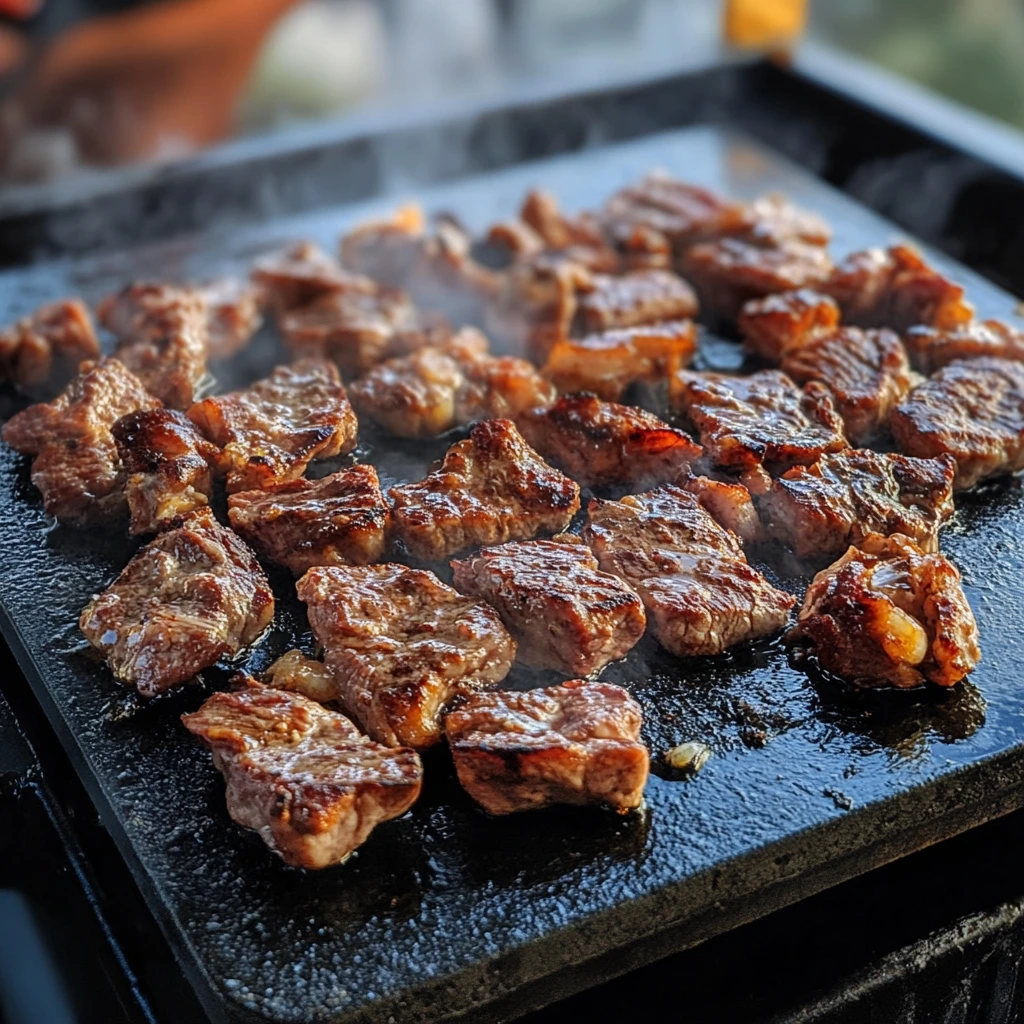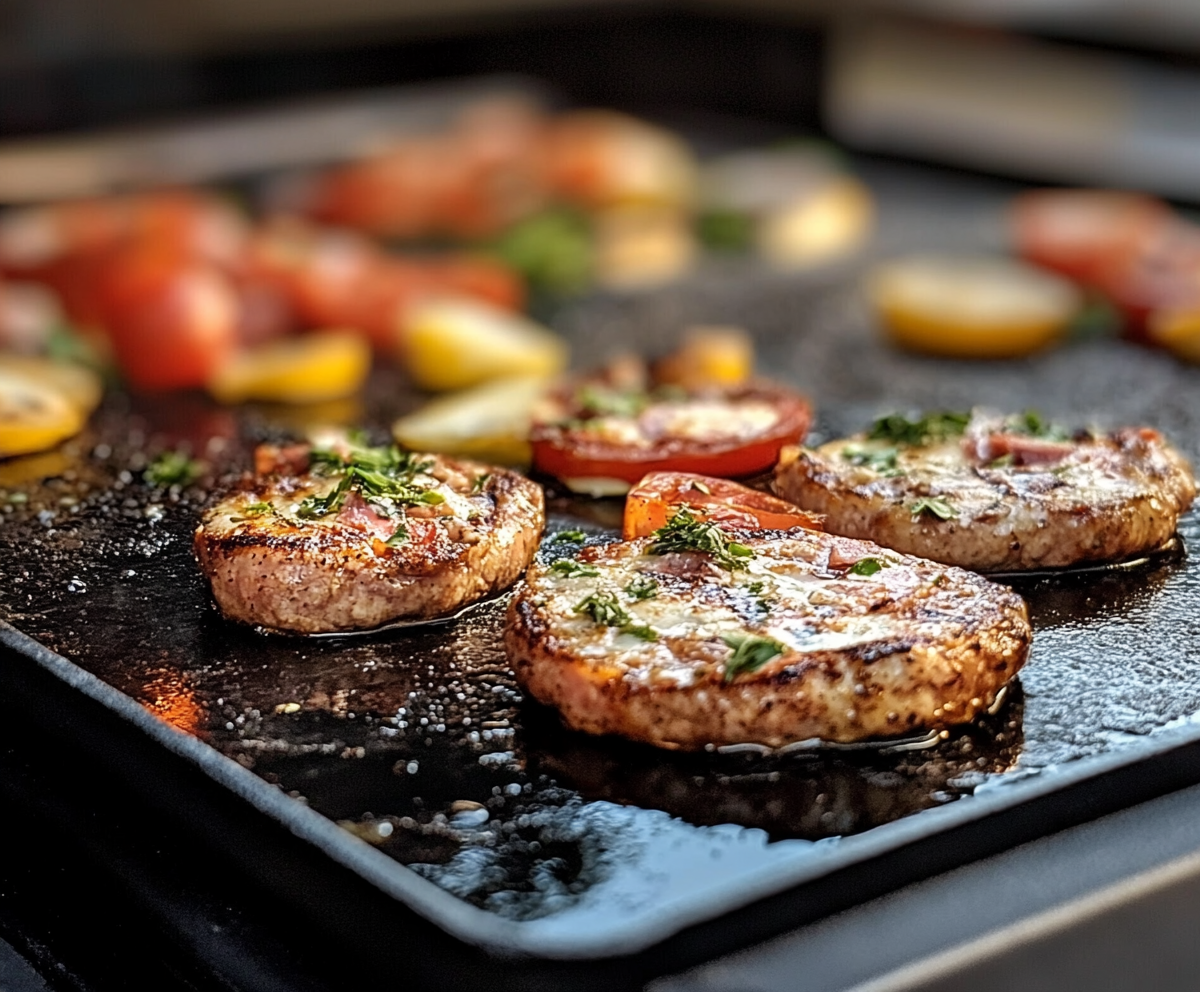The Blackstone griddle is a game-changer for outdoor cooking enthusiasts. Its versatility allows you to prepare everything from sizzling breakfasts to savory stir-fries. But like any cooking tool, improper use can lead to disappointing results, unsafe conditions, and even damage to the equipment. Whether you’re a novice or a seasoned griddle pro, understanding what not to do on a Blackstone griddle can help you maintain your equipment and ensure exceptional meals every time.
This article will cover the critical mistakes to avoid, practical solutions, and expert tips to maximize your griddle’s performance.
Misusing the Griddle Surface
The surface of a Blackstone griddle is arguably its most essential feature. Designed to evenly distribute heat and provide a non-stick cooking environment, this surface requires proper handling and care. Misuse can lead to uneven cooking, degradation of the seasoning, or permanent damage.
Mistakes to Avoid
1. Using the Wrong Tools
Using inappropriate tools is one of the most common errors people make with their griddle. Metal utensils with sharp edges can scratch the cooking surface, damaging the protective seasoning layer. This not only ruins the non-stick quality but also makes the surface more susceptible to rust and food residue.
What to Do Instead:
- Use utensils designed for flat-top cooking, such as silicone spatulas, wooden tools, or heat-resistant nylon implements.
- Avoid knives, forks, or any sharp tools directly on the griddle surface.
- Invest in a set of griddle-specific tools, including scrapers and spatulas, to ensure safe and effective cooking.
2. Skipping Preheating
Many users overlook the importance of preheating their griddle. Without adequate preheating, the surface temperature may vary, leading to uneven cooking or improperly cooked food. Preheating also allows the griddle to reach the right temperature for optimal searing and frying.
How to Preheat Properly:
- Turn on your griddle and set it to medium heat.
- Allow the griddle to heat for at least 10–15 minutes.
- Use an infrared thermometer to check that the surface temperature is consistent.
- Only start cooking once the entire griddle is evenly heated.
Skipping this step often results in underwhelming cooking results and frustration.
3. Cooking at Incorrect Temperatures
One of the griddle’s best features is its ability to handle a wide range of temperatures. However, using the wrong temperature can ruin your dish. Cooking pancakes at high heat, for instance, can burn them before they’re fully cooked, while low heat might leave a steak under-seared.
Temperature Tips for Different Foods:
- Low to Medium Heat: Eggs, pancakes, and delicate foods.
- Medium to High Heat: Burgers, chicken, and vegetables.
- High Heat: Searing steaks or creating a crispy crust on fried rice.
Investing in a high-quality thermometer can help you maintain precision.

Improper Cleaning Practices
Cleaning your Blackstone griddle is crucial to preserving its quality and functionality. However, cleaning mistakes can cause long-term damage or compromise the griddle’s performance.
Cleaning Errors to Avoid
4. Why Harsh Chemicals Are Bad for Your Blackstone Griddle
While it may seem logical to use strong cleaning agents to cut through grease, these can strip the seasoning layer and leave harmful residues. Chemicals can also react with the griddle’s surface, leading to discoloration or corrosion.
Safer Alternatives:
- Stick to warm water and a gentle scraper to remove food debris.
- For stubborn stains, use a mild dish soap sparingly, followed by thorough rinsing.
- Avoid ammonia-based cleaners or degreasers entirely.
5. The Consequences of Skipping Regular Blackstone Griddle Cleaning
Neglecting to clean your griddle after every use can lead to a buildup of grease, food particles, and carbonized residue. Over time, this not only affects the taste of your food but also increases the risk of rust.
Daily Cleaning Routine:
- After each cooking session, scrape off food debris while the griddle is still warm.
- Wipe the surface with a damp cloth or paper towel.
- Reseason the surface lightly to maintain its protective coating.
6. Abrasive Tools and Their Impact on a Blackstone Griddle Surface
Abrasive scrubbers like steel wool can damage the griddle’s surface by creating scratches. These scratches make it harder to clean and maintain the non-stick properties.
What to Use Instead:
- Griddle scrapers with smooth edges.
- Non-abrasive sponges or pads designed for non-stick cookware.
- Soft microfiber cloths for finishing touches.

Ignoring Regular Maintenance
Routine maintenance is essential for keeping your Blackstone griddle in excellent condition. Without proper care, your griddle may become rusty, lose its non-stick qualities, or underperform.
Maintenance Tips
7. Neglecting to Season the Griddle
Seasoning is one of the most important steps in maintaining a griddle. It creates a natural, non-stick layer that protects the surface from rust and improves cooking performance. Without it, food is more likely to stick, and cleaning becomes more challenging.
How to Season Properly:
- Clean the griddle thoroughly to remove any debris or previous oil residues.
- Heat the griddle to medium-high and allow it to dry completely.
- Apply a thin, even layer of cooking oil using a paper towel or cloth.
- Let the oil heat until it starts to smoke. Repeat this process 2–3 times to build a strong layer.
8. Leaving the Griddle Uncovered
Exposing your griddle to the elements can lead to rust, moisture buildup, and dirt accumulation. Rain, snow, or even morning dew can compromise the surface if left uncovered.
Protection Tips:
- Invest in a weather-resistant griddle cover that fits snugly.
- Store your griddle in a sheltered area, such as a garage or shed.
- If storing outdoors, ensure the surface is dry before covering.
9. Allowing Rust to Form
Rust is the enemy of any griddle. It not only damages the cooking surface but can also pose health risks if not removed properly.
Rust Prevention:
- Always clean and dry the griddle after each use.
- Reseason the surface regularly to create a protective barrier.
- If rust does develop, use fine steel wool to remove it, followed by thorough reseasoning.

Common Cooking Errors
Cooking on a Blackstone griddle requires more than just tossing food on the surface. Certain techniques and habits can lead to subpar results.
Cooking Pitfalls to Avoid
10. Overcrowding the Surface
While the griddle’s large cooking area is a significant advantage, overcrowding can hinder performance. Placing too much food on the griddle at once reduces airflow and heat distribution, leading to inconsistent cooking.
Optimal Spacing Tips:
- Leave at least 1–2 inches of space between food items.
- Cook in smaller batches if preparing meals for large groups.
- Use the entire surface strategically, separating zones for different foods.
11. Cooking Frozen Foods
While it may seem convenient, cooking frozen foods directly on the griddle often leads to uneven cooking and extended cook times. The moisture from the frozen items can also cause splattering, which can be hazardous.
What to Do Instead:
- Thaw frozen foods in the refrigerator overnight.
- Pat them dry with paper towels before placing them on the griddle.
12. Using Excessive Oil or Butter
While oils and butter can enhance flavor and prevent sticking, too much can make your food greasy and lead to difficult cleaning.
How to Use Oils Effectively:
- Apply oil sparingly using a brush or spray bottle.
- Choose oils with high smoke points, such as avocado or grapeseed oil.
Safety Hazards to Avoid
Using a Blackstone griddle safely is just as important as cooking delicious meals. Overlooking basic safety practices can lead to accidents, property damage, or health risks.
Safety Tips
13. Using the Griddle Indoors
Blackstone griddles are designed exclusively for outdoor use. Using them indoors or in enclosed spaces can result in carbon monoxide poisoning, which is life-threatening.
Safe Usage Tips:
- Always use the griddle in a well-ventilated outdoor area.
- Never operate it in enclosed patios, garages, or poorly ventilated spaces.
14. Storing Flammable Materials Nearby
Flammable items like paper towels, oil bottles, or lighter fluid should be stored at a safe distance from the griddle to reduce fire risk.
Storage Guidelines:
- Keep flammable objects at least 3–5 feet away from the griddle.
- Use heat-resistant storage containers for accessories and oils.
15. Ignoring Proper Ventilation
Cooking in areas with poor ventilation can lead to a buildup of smoke and fumes, which can irritate your eyes and respiratory system.
Ensure Adequate Ventilation:
- Position your griddle in an open space with good airflow.
- If under a canopy or patio cover, ensure proper air circulation.

FAQs
Why should I avoid using harsh cleaning chemicals?
Harsh chemicals can strip the griddle’s seasoning layer and leave toxic residues that may affect food safety.
What happens if I don’t season my griddle regularly?
Failing to season your griddle increases the likelihood of food sticking, rust, and uneven cooking.
Can I use my Blackstone griddle in an enclosed patio?
No, even in partially enclosed spaces, carbon monoxide risks remain high. Always use the griddle outdoors.
What foods should I avoid cooking on a Blackstone griddle?
Avoid foods that require delicate temperature control, like soft cheeses or thin fish fillets, as they may stick or overcook easily.
How often should I clean and maintain my griddle?
Clean after every use and re-season the griddle regularly to maintain its performance and longevity.
Conclusion
Proper care and use of your Blackstone griddle ensure that it remains a reliable cooking companion for years to come. Avoiding these common mistakes—like skipping maintenance, overcrowding the surface, or neglecting safety precautions—will save you time, money, and frustration. With consistent attention and a little effort, you can enjoy restaurant-quality meals from the comfort of your backyard.
Embrace these tips, and your griddle will reward you with perfectly cooked meals and an unparalleled cooking experience!

